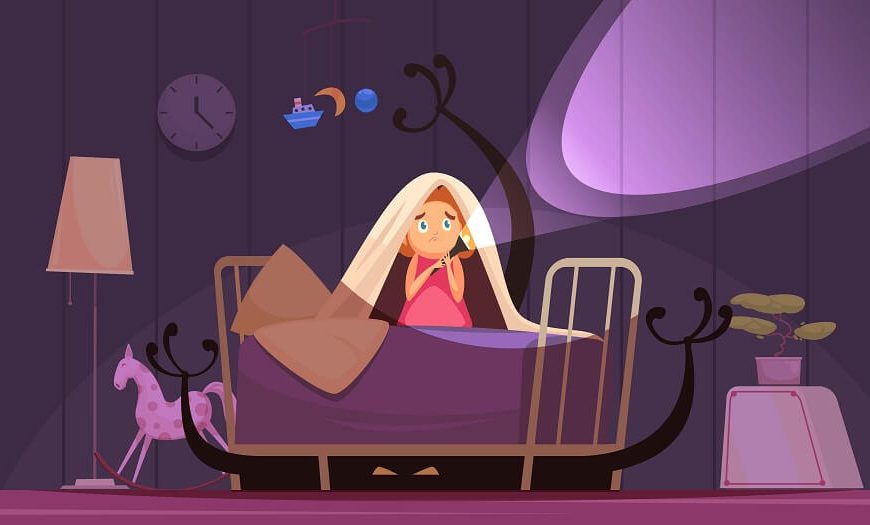Understanding Nightmares and Dreams
Nightmares can be like stormy nights in a child’s sleep, leaving them feeling scared and lost. As caregivers, it’s our responsibility to be their guiding light during these dark moments. Understanding the reasons behind nightmares, the causes of dreams, and the different dream types can help us provide effective support to soothe their fears. Imagine a child’s relief when they learn they are not alone in this journey. In this article, we will explore the significance of nightmares, delve into different dream categories, and discuss practical strategies that will help our little ones find comfort and conquer their frightening nightmares.
What are nightmares?
Nightmares are vivid and distressing dreams that evoke fear, anxiety, and a sense of helplessness. They commonly occur during the REM (Rapid Eye Movement) stage of sleep when brain activity is heightened. Nightmares often feature themes such as being chased, falling, or encountering threatening figures. It’s essential to create a safe and supportive environment for children to address and cope with their nightmares effectively.
Reasons for Nightmares
Nightmares can stem from various reasons, including anxiety and stress, traumatic experiences, sleep disruptions, and active imagination. Children may experience nightmares due to everyday challenges, academic pressures, conflicts, or fears related to personal or global issues. Understanding these triggers allows us to provide targeted support and address underlying emotional concerns.
What causes dreams?
Dreams are a complex and fascinating phenomenon. While scientists and researchers have not yet unravelled the full mystery behind dreams, there are several theories on what causes them. Yes, there is no specific answer to the question: what causes dreams? Dreams can be attributed to:
Unconscious Mind: According to Freudian psychoanalysis, dreams serve as a means to access the unconscious mind, allowing repressed desires, fears, and emotions to surface.
Cognitive Processes: Dreams may be a product of the brain’s effort to organise and process the information and experiences acquired during the day.
Emotional Regulation: Dreams can function as a mechanism for emotional regulation, allowing individuals, including children, to process and deal with intense emotions.
Random Neural Firings: Another theory posits that dreams are a result of random neural firings in the brain during sleep. These random firings create a narrative that may seem disconnected or bizarre.
Different Types of Dreams:
Dreams can be categorised into various types, each with its own unique characteristics. Ordinary dreams reflect everyday experiences and concerns, incorporating familiar elements from a child’s daily life. Lucid dreams occur when individuals become aware they are dreaming, offering some control over the dream’s outcome. Prophetic dreams are rare but seem to foretell future events. Recurring dreams, on the other hand, are repetitive dreams that may indicate unresolved issues or recurring emotional themes requiring attention. Understanding the different types of dreams helps us contextualise nightmares and offer appropriate guidance to children.
Guiding Children on Effective Strategies for Coping with Frightening Nightmares:
Create a Safe Sleeping Environment: Ensure that the child’s bedroom is a calm and secure space. Use nightlights or comforting objects, such as stuffed animals, to alleviate fear and anxiety.
Encourage Open Communication: Create a supportive atmosphere where children feel comfortable sharing their nightmares. Listen attentively, validate their feelings, and provide reassurance.
Establish a Bedtime Routine: A consistent bedtime routine helps children feel secure and relaxed. Incorporate calming activities such as reading a book or engaging in quiet play to ease the transition into sleep.
Teach Relaxation Techniques: Introduce relaxation techniques like deep breathing, visualisation, or progressive muscle relaxation to help children relax before bedtime and manage anxiety during nightmares.
Empower Through Dream Control: Encourage children to practise positive visualisation or imagine alternate endings to their nightmares, empowering them to take control of their dreams.
Promote a Positive Sleep Attitude: Teach children that dreams are a natural part of sleep and can sometimes be challenging. Foster a positive attitude towards sleep, emphasising its importance in overall well-being.
Seek Professional Help if Needed: If nightmares persist or significantly impact the child’s daily life, consider consulting a healthcare professional or a paediatrician specialising in sleep disorders.
Conclusion:
In this grand symphony of childhood, nightmares may be just a passing storm, but with our love and guidance, our children will find shelter. Picture their serene faces as they drift off to sleep, knowing they possess the strength to conquer their fears. By understanding nightmares and the reasons for nightmares, embracing the beauty of dreams, and implementing effective strategies, we become their steadfast allies in this nighttime odyssey. Together, we create a world where they can navigate the realm of dreams with confidence, ensuring their nights are filled with restful slumbers and the sweetest of dreams.
When it comes to providing a nurturing and stimulating environment for your child’s overall development, consider exploring a reputable preschool like EuroKids. With our child-centric approach and emphasis on holistic learning, EuroKids fosters an environment where children can thrive academically, socially, and emotionally. If you wish to learn more about us and our specially crafted curriculum, do visit the EuroKids centre nearest to your house today!
You May Also Like These, Why kids cry while going to school















